In the Studio: Samira Abbassy
“My attempt in depicting the human form is almost like a psychic x-ray, so the n...

Raheleh Filsoofi is an artist based in Nashville, TN, and a 2023 Joan Mitchell Fellow. We interviewed her about her work and creative practice in March 2024. The following is an edited transcript of that conversation.
I have a nomadic and itinerant artistic practice, which involves exploring various dimensions: geographical, conceptual, temporal, and disciplinary. This approach draws inspiration from the historical and philosophical legacies of Middle Eastern travelers and scholars like Ibn Battuta and Saadi Shiraz. These pioneers shared their experiences and perceptions of unfamiliar territories to create insightful narratives about identity, humanity, and commonality.
As an Iranian American woman, my own experience as an immigrant has deeply influenced my artistic practice, and I am driven to produce work that challenges current perspectives on ethics, politics, society, nature, and culture. To achieve this goal, I experiment with different aesthetic strategies and incorporate various media and materials with wide-ranging applications to my subject matter. My multimedia installations and performances aim to provide layered, multi-dimensional experiences in reimagining a space in which the divisions between places, people, and cultures collapse and coalesce.
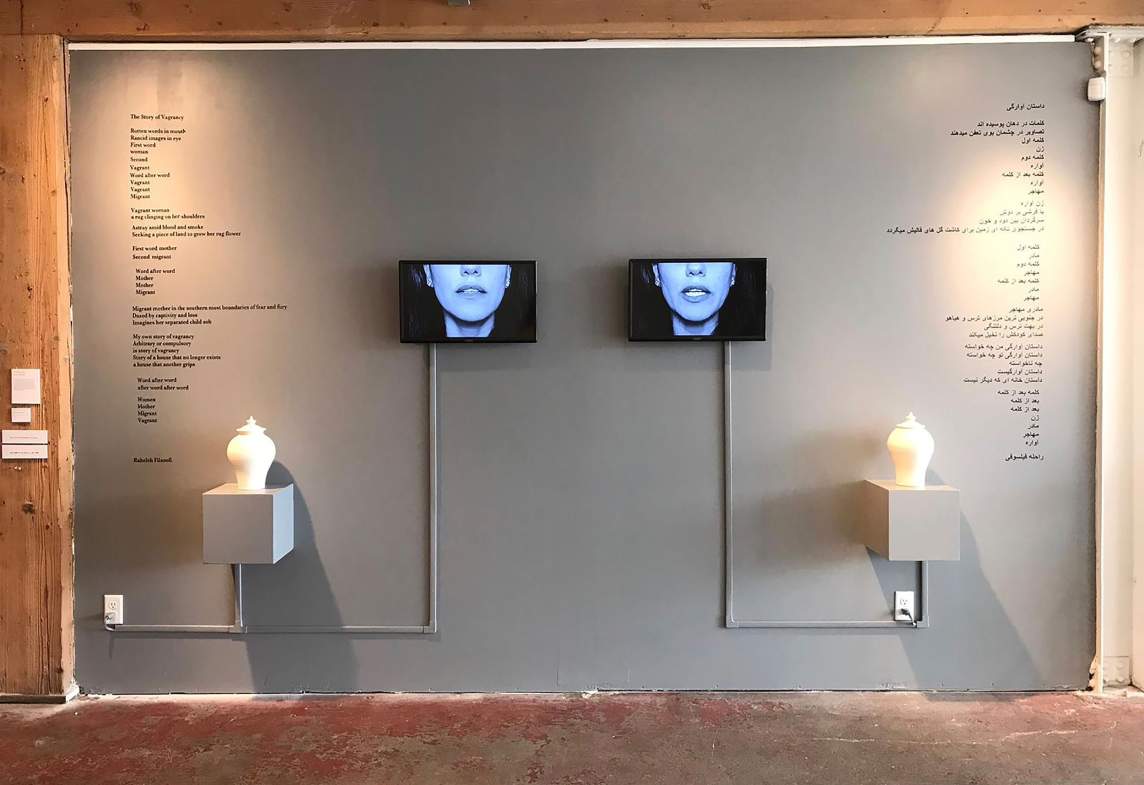
I firmly believe that to be a professional artist, one must be highly motivated. My motivation as an artist comes from various sources that collectively inspire and drive me forward. One significant factor is a sense of obligation that I feel towards life itself. Having navigated through revolutions, wars, social and political turmoil, as well as the complexities of immigration and the challenges of being a woman and a woman of color in diverse environments, I've come to view the act of simply surviving as a powerful force pushing me to keep moving forward.
I find inspiration in the resilience of women in my country and the Middle East who, despite facing various societal constraints and limitations, continue to make significant contributions to their communities.
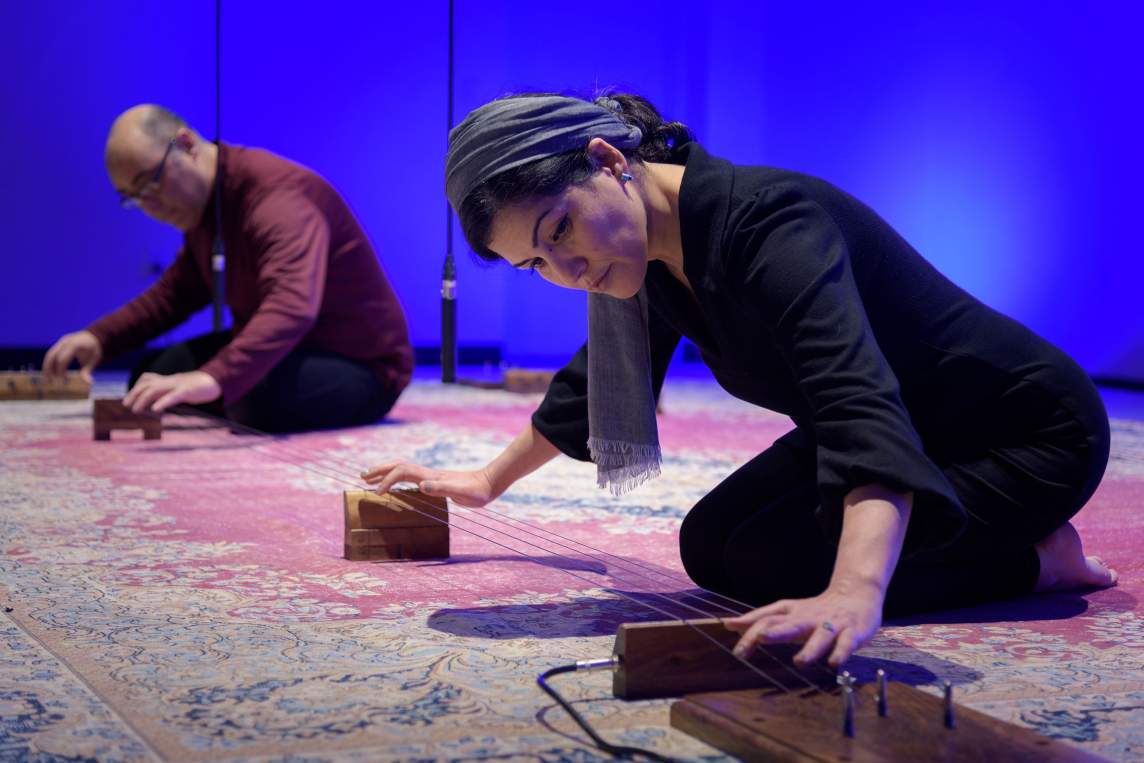
Collaborating with my musician husband and being part of the vibrant Middle Eastern community in Nashville fuels my motivation.
The sensory experiences of the world around me also play an important role in motivating my artistic practice. The earth beneath my feet, the sounds around me, and the ever-changing political landscapes all serve as catalysts for action. As the Iranian poet H. E. Sayeh said, "There is no miracle that comes from your corpse; be alive." This sentiment resonates deeply with me and serves as a constant reminder to remain active, engaged, and alive in all aspects of my life.
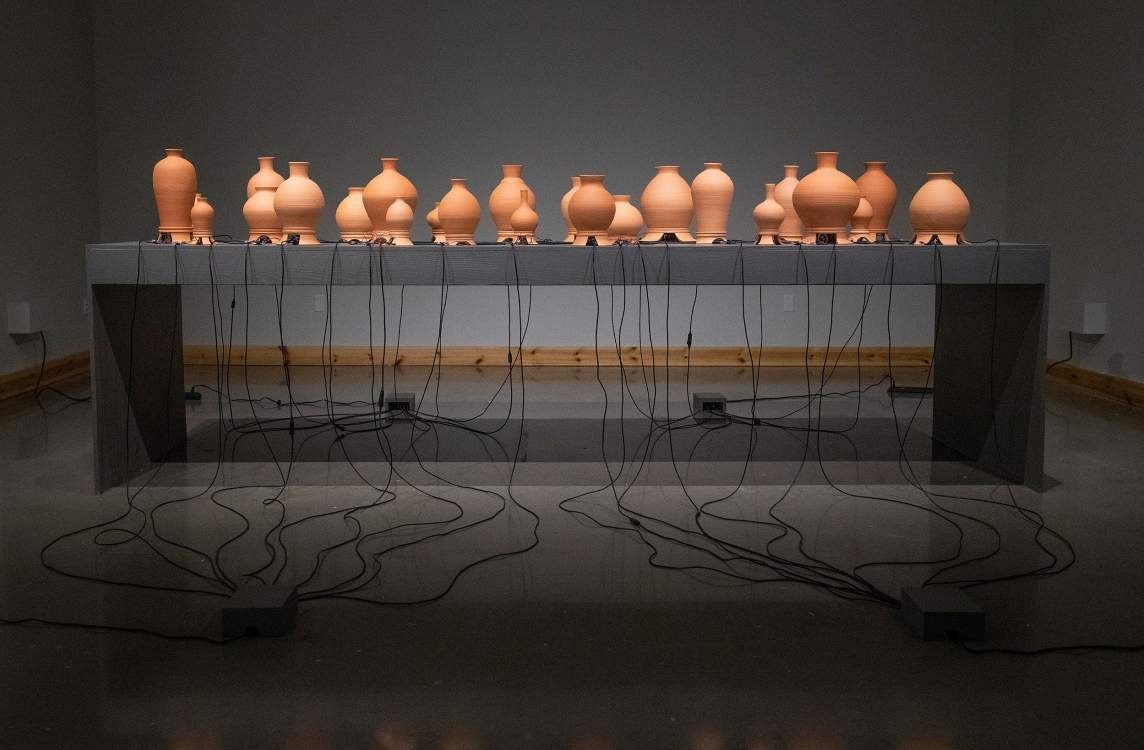
In my current work, I’m primarily exploring clay and sound. I am fascinated by the tangible nature of clay juxtaposed with the ephemeral qualities of sound, and I have discovered a world of possibilities where these two elements meet and intersect.
Clay embodies the historical and cultural traditions that I uphold in my work. However, the multifaceted and dynamic nature of this material continually invigorates my creative process. While I hold a deep respect for the legacy of Iranian and Middle Eastern ceramic artists throughout history, I also recognize the importance of forging my own path as a contemporary artist. As a dedicated and committed artist, I feel compelled to contribute to the ongoing evolution of this tradition.
Since 2016, I have been engaged in the collection of sound and soil, compiling resources from places I have lived or visited. Over the years, I have traveled to more than 38 states in the United States and have gathered soil from hundreds of locations. I incorporate these materials into various works, ranging from multimedia installations to my performances. Consequently, much of my work remains in progress.
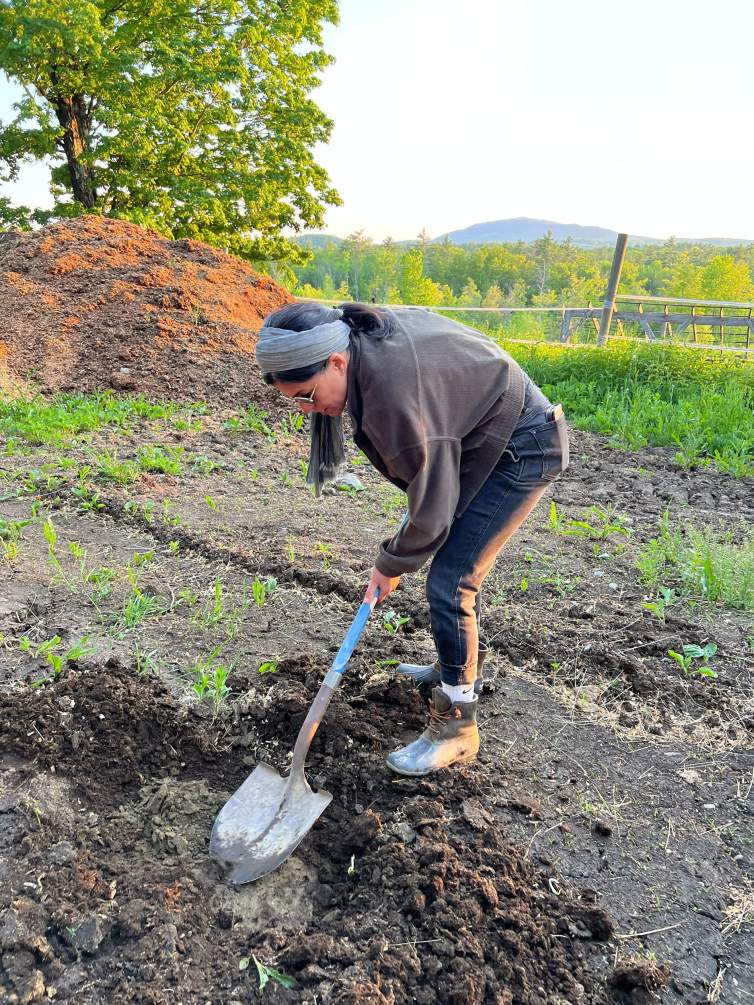
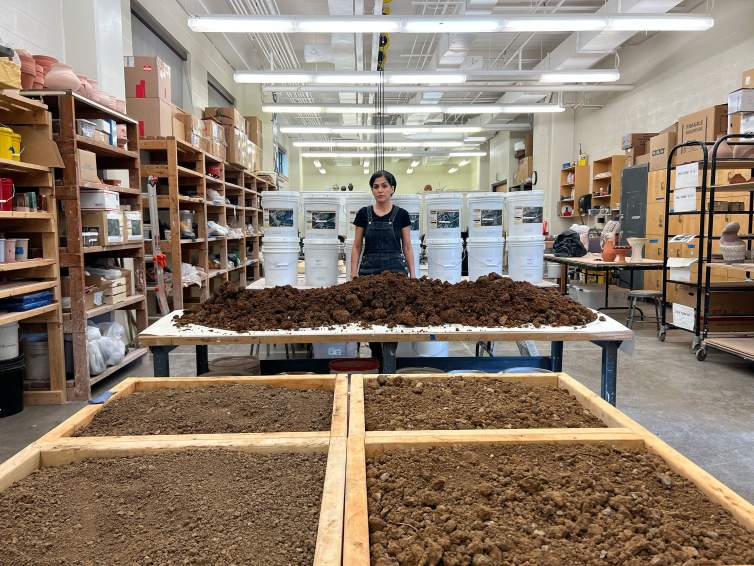
This ongoing research and collection process is labor-intensive, and while I share my current works, I understand that they may continue to evolve and expand over time, as each piece demands significant investments of time, labor, and materials.
My current project also investigates movement, and I must acknowledge that constant motion and labor are not only integral components of my artistic process but also serve as materials themselves, shaping the works I create. Additionally, I am currently developing a performance project centered around my body and its movements. I consider my body not merely as a tool but as an accessible material for exploration and expression in this project.
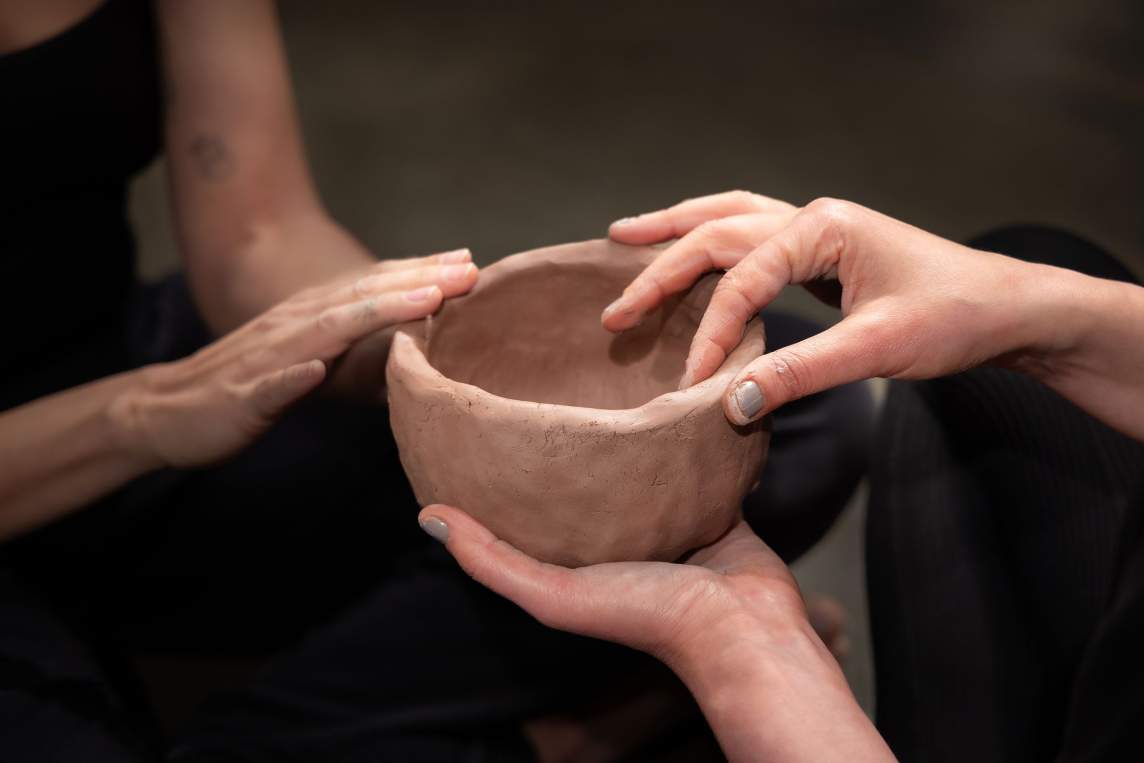
One of my current projects is titled Resonance of the Lands. It's a collaborative effort between myself and musician partner Reza Filsoofi, involving other artists, musicians, organizations, and notably immigrants, refugees, and other underrepresented groups in Nashville. The project aims to explore personal, social, and collective geography.
Reza and I mapped and collected clay from various locations in and around Nashville, using it to craft over 30 instruments inspired by Middle Eastern and North African clay drums and darbukas. Through hands-on ceramic and textile workshops at the Vanderbilt ceramic studio, community members, predominantly immigrants, participated in decorating and finalizing the instruments while connecting with their past and present history in Nashville.
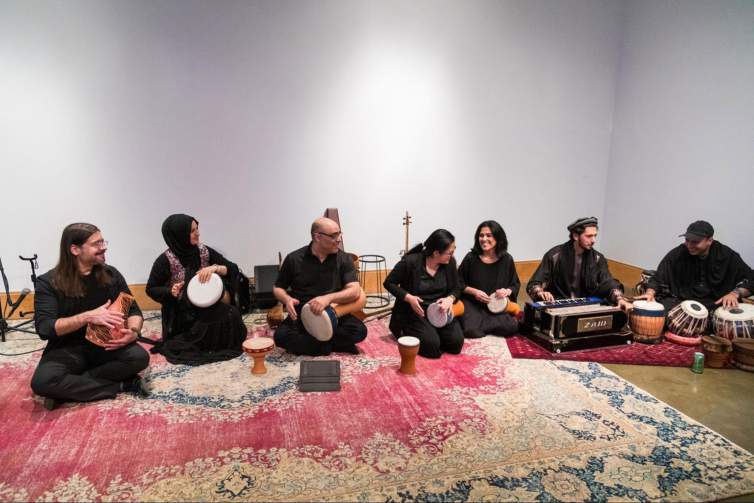
The recent performance featuring these clay instruments stimulated communication and promoted healing, particularly in socially divided Nashville. We collaborated closely with organizations like the Nashville International Center for Empowerment and the Global Education Center, which serve immigrant and refugee communities, enriching our collective effort toward a shared goal. Through various events, we broke down barriers and fostered collaboration across disciplinary, academic, and community boundaries. Our aim was to initiate a “Progressive Transformation” or “Urgent Collaboration” in greater Nashville, with hopes that the resonance of our efforts will echo across the United States for years to come. The ceramic instruments, traditionally made for centuries, now carry a new mission: to unite and be inclusive.
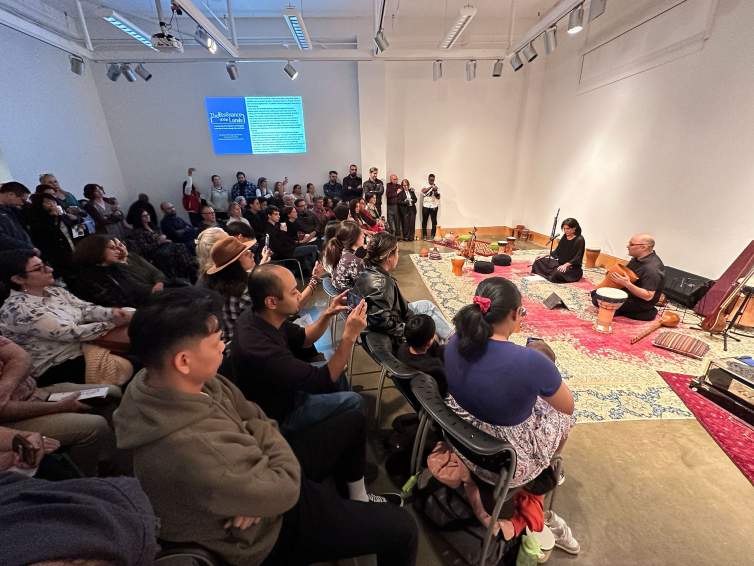
I am fascinated by the unlimited relationship between sound and clay and seek to continue to explore their potential and connection in my work. I hope that my practice can be regarded as a space of contemplation, curiosity, and engagement through and between objects, people, and communities. I hope that audiences will appreciate the labor, process, and research embedded in my work and recognize them as integral components of my content.
The clay and ceramic objects have come through a long journey with me during the past decade. In my multimedia installations, ceramic vessels transcend their traditional roles and become vessels for storing sounds, creating spaces for memories and experiences. For example, in performances such as Resonance of the Lands, these vessels transform into instruments and sound makers, reclaiming traditional roles with new missions. In another project, Say Their Names, I recited the names of over 500 protestors and civilians killed during protests, memorializing them in a performance using a ceramic vessel. The vessel served as a microcosm, creating a space for an aural archive.
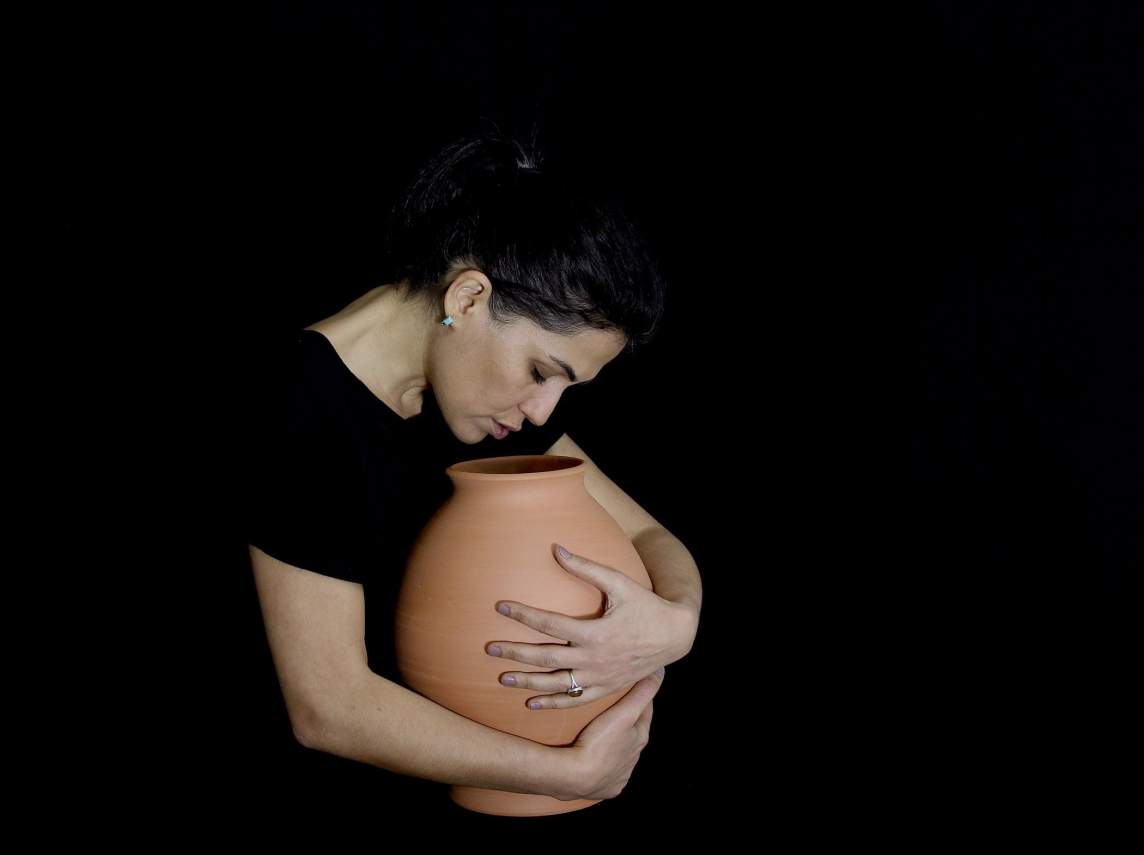
Having lived and practiced in the southern region for the past decade, I am currently deepening my exploration of this area through my work. Despite its unique artistic dynamics, the South often remains overlooked beyond its immediate scope. While I'm expanding the reach of my practice beyond the region, I still have a lineup of exhibitions, performances, and workshops planned within the South in the upcoming years, supported by the region’ art communities.
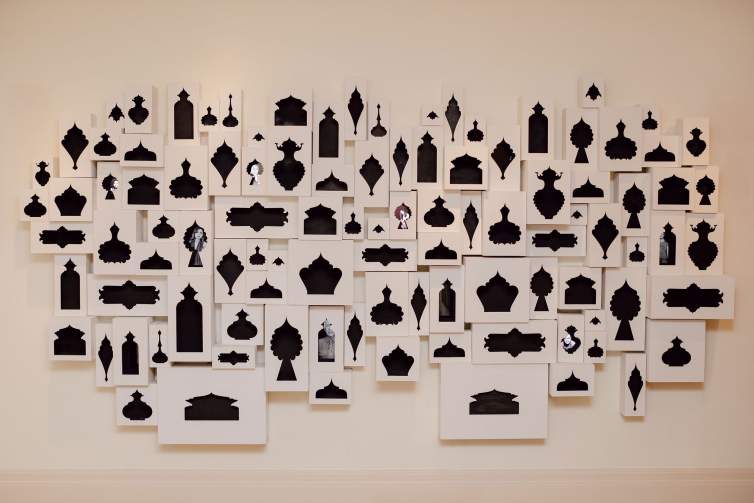
One of my ongoing projects, Imagined Boundaries: Through the Eyes of the Past and Present, explores both local and global boundaries. Inspired by 18th-century Charles Fraser's miniature paintings at the Gibbes Museum in Charleston, South Carolina, I extend his legacy, emphasizing inclusivity as an immigrant woman of color in the South. The work aims to foster dialogue and curiosity, bridging past masterpieces with contemporary vision. This work will become part of the permanent collection at the museum set to be installed in the upcoming October.
Additionally, I've been invited to create work inspired by the exhibition The Moss Mystique: Newcomb Pottery at the Telfair Museum in Savannah, Georgia, opening in June 2025. This exhibition reflects on the legacy of Newcomb Pottery, a venture by administrators at H. Sophie Newcomb Memorial College in the late 19th century. Male potters created objects from Southern clays, while female graduates painted them, gaining recognition for representing Southern regional identity.
As a collector of soil and sound, my installation will explore clay's materiality and my experiences as an Iranian American artist in the Southeast. I aim to engage with present-day perceptions of Southern identity and authenticity, prompting viewers to reconsider the historical objects in the context of personal and regional identity today.
Interview and editing by Jenny Gill. Learn more about Raheleh Filsoofi’s work at rahelehfilsoofi.com and on Instagram.